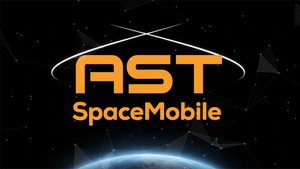
The financial world is abuzz with a groundbreaking prediction: the market capitalization of tokenized funds is expected to skyrocket to an astounding $1.9 trillion by 2030. This audacious forecast, primarily driven by a surge in institutional interest and the transformative power of blockchain technology, signals a profound shift in how traditional assets are managed, traded, and accessed. The immediate implications are vast, promising enhanced efficiency, liquidity, and new revenue streams across global financial markets, while simultaneously validating blockchain's role beyond speculative cryptocurrencies.
This significant projection is not mere speculation but emanates from comprehensive analyses by leading financial powerhouses and consulting firms. Reports from McKinsey, Galaxy Digital, and Citigroup (Citi) consistently point towards this $1.9 trillion figure as a base scenario for tokenized assets, often excluding stablecoins and central bank digital currencies (CBDCs) to focus on broader asset classes. Some optimistic scenarios even suggest this figure could double or triple, with a joint report by Ripple and Boston Consulting Group (BCG) envisioning an even more staggering $12 trillion by 2030 under conservative assumptions.
As of early October 2025, the tokenized real-world assets (RWAs) market on-chain already stands at approximately $33.20 billion, demonstrating tangible progress towards these lofty targets. A significant driver of this growth has been the burgeoning market for tokenized money market funds (MMFs), which have surpassed $1 billion in assets under management (AUM) as of Q1 2024. Industry giants like BlackRock (NYSE: BLK), WisdomTree (NASDAQ: WT), and Franklin Templeton (NYSE: BEN), alongside innovative Web3 native firms such as Ondo Finance, are actively leading this charge, converting traditional MMFs holding US Treasuries into blockchain-based tokens. BlackRock's own tokenized MMF alone has already eclipsed the $1 billion AUM mark, underscoring the rapid institutional adoption.
The timeline leading to this moment has been characterized by increasing experimentation and strategic investments from established financial players. Firms like JPMorgan Chase (NYSE: JPM), through its Onyx blockchain platform, have been at the forefront of tokenizing assets and facilitating cross-border payments for several years. Similarly, Fidelity and UBS (NYSE: UBS) have launched various initiatives exploring the tokenization of funds and other financial products, recognizing the potential for 24/7 asset movement, instant settlement, and automated compliance through smart contracts. These early movers are not just observing but actively shaping the future landscape, responding to the demand for more efficient and transparent financial infrastructure.
The initial market reaction to this burgeoning sector has been overwhelmingly positive, viewing tokenization as a foundational redesign of the financial system. It heralds a future where previously illiquid assets can be fractionalized and made accessible to a broader investor base, significantly enhancing market liquidity. This convergence of traditional finance (TradFi) with decentralized finance (DeFi) is seen as a path to creating a more interconnected and potentially resilient financial ecosystem, driving innovation and validating blockchain's utility in mainstream financial applications.
Companies Poised for Triumph or Turmoil
The predicted surge in tokenized funds creates a clear dichotomy of winners and those facing significant disruption within the financial ecosystem. Traditional financial institutions that are proactively embracing blockchain technology are poised to be major beneficiaries. BlackRock (NYSE: BLK), for instance, has aggressively moved into tokenized money market funds (MMFs) with its BUIDL fund on Ethereum, demonstrating a strategic blend of blockchain integration and regulatory compliance. Its vast assets under management (AUM) and investments in platforms like Securitize position it to capture a substantial share of this evolving market. Similarly, JPMorgan Chase (NYSE: JPM), a long-time blockchain pioneer through its Quorum network and Onyx platform, views tokenization as a "Killer App" for traditional finance, aiming to reduce operational costs and unlock new revenue streams by offering cutting-edge tokenized services.
Other traditional players like BNY Mellon (NYSE: BK), the world's largest global custody bank, are strategically positioning themselves as leading custodians and service providers for tokenized assets, leveraging their extensive network and expertise. Their pilot projects in tokenizing private equity funds and efforts in tokenized deposits highlight a clear path to modernization. Franklin Templeton (NYSE: BEN), with its tokenized MMFs like BENJI, and Goldman Sachs (NYSE: GS), with its enterprise-level tokenized asset infrastructure, are also well-positioned to capitalize on the demand for regulated, on-chain financial products. Even private credit giants like Apollo Global Management (NYSE: APO) are extending into tokenized markets with their Apollo Digital Credit platform, aiming to unlock liquidity in traditionally illiquid assets.
On the technology front, specialized blockchain providers are the backbone of this transformation. While many are private, their impact is profound. Securitize, a leading SEC-registered platform for real-world asset (RWA) tokenization, is fundamental to scaling tokenized funds, having received strategic investment from BlackRock. Ondo Finance, specializing in tokenizing fixed-income products, and Tokeny Solutions, providing compliance-first tokenization platforms, are critical enablers. Public blockchain platforms like Solana (SOL) are also set to win, as their high speed and low transaction fees make them attractive as underlying infrastructure for high-throughput tokenized asset transactions. Cryptocurrency exchanges like Coinbase (NASDAQ: COIN) and retail brokerage platforms like Robinhood (NASDAQ: HOOD) are also expanding their offerings to include tokenized stocks, bridging the gap between crypto-native investors and traditional assets, though Robinhood has faced regulatory scrutiny regarding its approach to tokenized private company shares.
Conversely, companies resistant to change or slow to adapt face significant challenges. Traditional intermediaries whose business models rely on the inefficiencies of legacy finance – such as manual reconciliation and multi-day settlement cycles – risk disintermediation. Custodians, transfer agents, and back-office service providers that fail to invest in distributed ledger technology (DLT) or integrate with tokenization platforms could see declining relevance and revenue. Similarly, legacy market infrastructure providers like traditional stock exchanges or clearinghouses that do not upgrade their technology to accommodate tokenized securities and instantaneous settlement risk losing market share to new, agile digital asset exchanges. The Depository Trust & Clearing Corporation (DTCC), a critical clearing and settlement firm, must adapt its infrastructure to support blockchain-based settlement or face potential disruption to its traditional functions. Furthermore, firms that attempt to leverage tokenization for regulatory arbitrage rather than compliance face severe legal and reputational repercussions, as regulatory bodies globally are keen on enforcing existing securities laws on tokenized assets.
A New Era for Financial Markets
The projected ascent of the tokenized funds market to $1.9 trillion by 2030 represents more than just a new product offering; it signifies a profound paradigm shift in the global financial landscape. This growth aligns perfectly with several overarching industry trends, including the accelerated institutional adoption of blockchain technology, a relentless pursuit of increased liquidity and accessibility for a broader investor base, and a pervasive drive for operational efficiency and cost reduction across the financial sector. The immutable and distributed nature of blockchain offers enhanced transparency and security, fostering greater trust and enabling the diversification of tokenized assets beyond traditional financial instruments to include everything from real estate to carbon credits. This trend is also fostering a deeper integration with the broader decentralized finance (DeFi) ecosystem, unlocking novel use cases for tokenized fund shares.
The ripple effects of this transformation will be felt across the entire financial industry. Traditional asset managers, particularly those like BlackRock (NYSE: BLK) and Franklin Templeton (NYSE: BEN) that are early adopters, stand to gain a significant competitive advantage. However, those who hesitate risk falling behind in what some experts are calling the "third revolution" in asset management. Existing exchanges and trading platforms will be compelled to adapt their infrastructure to accommodate 24/7 trading and near-instant settlement, or face the emergence of new, blockchain-native trading venues. While traditional custodians are integrating tokenization, the technology's ability to automate processes could challenge some established roles, though specialized digital asset custody solutions will become increasingly critical. The market will also see continued innovation from Web3 native companies, intensifying competition and driving further technological advancements. The inherent reduction in intermediation through smart contracts and shared ledgers will streamline value chains, leading to lower costs for financial institutions, but also requiring existing intermediaries to redefine their value proposition.
This monumental shift also carries significant regulatory and policy implications. Regulators globally are actively engaged in understanding and shaping this new frontier, running pilot projects and establishing regulatory sandboxes to address the complexities. The core principle remains that tokenized funds, particularly those representing investment vehicles, are subject to existing securities laws, necessitating compliance with KYC, AML, and disclosure obligations. However, new challenges arise in clarifying the legal enforceability of smart contracts and evolving custody solutions for digital tokens linked to physical assets. Policymakers must also contend with potential systemic risks, as the increased speed and accessibility of tokenized assets could amplify financial stresses during market downturns. Questions of operational risk and accountability, especially on public, decentralized infrastructure, will require careful consideration, and international cooperation will be essential to harmonize cross-border regulations and prevent regulatory arbitrage.
Historically, the evolution of tokenized funds draws parallels to past financial innovations that fundamentally reshaped markets. Experts liken it to the emergence of mutual funds in the 1940s and Exchange Traded Funds (ETFs) later on, both of which revolutionized how investment exposure was packaged and distributed. McKinsey & Co. even compares the initial rapid growth rates of tokenized assets to the early phases of credit cards and ETFs, suggesting a similar trajectory of explosive initial growth followed by maturation. Tokenization is a natural progression in finance's long-standing effort to make static assets more dynamic and accessible, building on mechanisms like securitization and derivatives. However, the International Monetary Fund (IMF) cautions against a "complexity bubble" similar to the one that contributed to the 2008-2009 financial crisis, highlighting the need for careful oversight as the programmability of tokenization could lead to highly complex products whose risks are not fully understood. This emphasizes that while the benefits are immense, the journey requires vigilance and adaptive governance.
The Road Ahead: Opportunities and Obstacles
The trajectory of the tokenized funds market, while promising, is contingent on strategic adaptations and the successful navigation of emerging opportunities and challenges. In the short-term (next 1-3 years), the primary drivers of growth will likely remain tokenized money market funds (MMFs) and treasuries. These instruments offer immediate benefits such as faster settlements, lower operational costs, and enhanced accessibility, particularly for investors holding cryptocurrencies seeking yield-bearing products on-chain. The continued expansion of offerings from major players like Franklin Templeton (NYSE: BEN), BlackRock (NYSE: BLK), and JPMorgan (NYSE: JPM), coupled with their integration into Decentralized Finance (DeFi) platforms, will solidify their position as crucial growth avenues.
Looking further ahead, towards 2030 and beyond, the long-term possibilities envision a fundamental reshaping of the investment landscape. Tokenization is expected to democratize investment by fractionalizing high-value assets, making them accessible to a broader range of investors. The vision includes routine issuance of government bonds, blue-chip equities, and real estate investment trusts (REITs) as tokens on regulated public ledgers, leading to a fully digital financial ecosystem. This aims to unlock new growth opportunities and redefine how financial assets are managed and traded globally.
To realize these ambitious forecasts, various market participants must undertake strategic pivots. Asset managers need to expand their client base to include digital-native investors, carefully evaluating their product suites for tokenization suitability and exploring hybrid fund models. Regulators, on their part, must establish clear, harmonized regulatory frameworks that foster trust and confidence across jurisdictions without stifling innovation. Initiatives like Singapore's Project Guardian are vital in this regard. Technology and infrastructure providers must prioritize interoperability between diverse blockchain platforms and traditional financial systems, developing scalable solutions and refining new investor tooling and custody models. Ultimately, success hinges on robust collaboration among regulators, fund managers, and technology providers to address compliance, liquidity, and technical hurdles.
Emerging market opportunities are abundant, including enhanced liquidity and accessibility through fractional ownership, significant reductions in costs and operational efficiencies via automation, and new growth drivers by attracting digital-native investors. The composability of tokenized assets also allows for innovative investment strategies and increased transparency. However, significant challenges persist, most notably regulatory uncertainty and fragmentation across international borders, technological integration complexities with legacy systems, and the need to deepen liquidity in nascent tokenized asset markets. Ensuring robust AML/KYC compliance for real-world asset (RWA) tokenization, educating investors, and developing new accounting and valuation approaches are also critical. The market faces a "cold start problem" where initial investments are needed to overcome limited liquidity and achieve widespread adoption.
Regarding the $1.9 trillion prediction by 2030, several scenarios are possible. Realizing or even exceeding this base case, as projected by McKinsey, is plausible if regulatory clarity emerges, technological interoperability and scalability advance significantly, institutional adoption accelerates, and liquidity deepens through robust secondary markets. BlackRock's CEO, Larry Fink, has underscored this potential, stating that "the next step going forward will be the tokenization of financial assets." More optimistic scenarios, reaching $4 trillion (McKinsey) or even $30.1 trillion (Standard Chartered), could materialize if regulators permit the direct conversion of existing mutual funds and ETFs into tokenized formats, and if there's a seamless and regulated blending of traditional finance (TradFi) with decentralized finance (DeFi). Conversely, a pessimistic scenario, where the market only reaches $0.8 trillion, could occur if regulatory stagnation persists, technological bottlenecks remain unresolved, liquidity fails to materialize, or tokenized assets do not sufficiently differentiate themselves from existing financial instruments. The coming years will be crucial in determining which of these paths the tokenized funds market ultimately takes.
The Enduring Impact of Tokenization
The journey towards a $1.9 trillion tokenized funds market by 2030 marks a pivotal moment in financial history, driven by the undeniable advantages of blockchain technology and the growing appetite of institutional investors. The key takeaways from this evolving landscape are clear: tokenization promises unparalleled efficiency, enhanced liquidity, and broader accessibility for a diverse range of assets, fundamentally reshaping how value is created and exchanged. It represents a powerful convergence of traditional finance with the innovative capabilities of decentralized technologies, paving the way for a more integrated and resilient global financial system.
Moving forward, the market will be defined by the proactive steps taken by both established financial giants and agile blockchain innovators. Success will hinge on their ability to navigate complex regulatory landscapes, ensure technological interoperability, and address the critical need for robust liquidity. The financial institutions that strategically invest in blockchain infrastructure, embrace regulatory compliance, and adapt their business models to leverage the efficiencies of tokenization are poised for significant growth and leadership in this new era.
The lasting impact of tokenized funds will extend beyond mere market capitalization, fostering a more transparent, secure, and democratic financial ecosystem. Investors should closely watch for continued regulatory developments, the emergence of standardized protocols for tokenization, and the expansion of institutional-grade tokenized products across various asset classes. The evolution of secondary markets and the resolution of interoperability challenges will also be crucial indicators of the market's trajectory. While the path ahead is not without its complexities, the momentum behind tokenized funds suggests a future where digital assets play an increasingly central role in global finance.
This content is intended for informational purposes only and is not financial advice.






